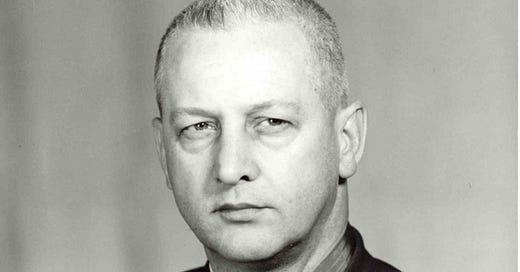TDIH: William Shomo, WWII Hero
He became an “ace in a day” because of his seven aerial victories, all scored during a single mission.
On this day in 1918, a hero is born. William Shomo would go on to serve in the U.S. Army Air Corps during World War II. He fought in an aerial battle that would earn him the Medal of Honor.
It’s been said that then-Captain William Shomo became an “ace in a day” because of his seven aerial victories, all scored during a single mission.
He could have flown right by and avoided the battle. No one would have thought any less of him. After all, he and his wingman, Lt. Paul Lipscomb, were badly outnumbered.
The two pilots had been on a mission near the Philippines. Their fighters were prepared for armed photo reconnaissance, and they were tasked with seeing if Japanese airdromes in the northern part of Luzon were occupied.
Then fate intervened.
As Shomo flew toward Luzon, he saw an enemy twin-engine bomber flying about 2,500 feet above him. The bomber was accompanied by 12 fighter planes, and it was flying away from Shomo and Lipscomb.
The odds were 13 to 2. Nevertheless, Shomo ordered an attack.
“Surprisingly,” Shomo later told a reporter, “I had been over in the war for almost 16 months at that time. . . . I had never had the opportunity to actually get a crack at an airplane in the air, that is a Jap airplane, while I was flying. I’d seen them while they were bombing our bases, but never while I was airborne. So the opportunity was the time of a lifetime. And at that point, I made up my mind I wasn’t going to miss. I’d waited too long for the opportunity.”
In other words, he did more than just attack. Shomo flew as close as he could, firing shots at close range. It was surely a sight to see!?! Shomo’s citation describes his dives, climbing turns, and head-on attacks as he took out first one Japanese plane, then the next.
When the dust had settled, Shomo had scored seven hits. His wingman had shot down three planes, and the last three had escaped.
The two pilots must have been on cloud nine. As they returned to base, Shomo performed a victory roll in plain view of those on base . . . then another . . . and another. “By the time he was making the fifth, the sixth, and seventh roll,” an old news reel described, “no one would believe it. Seven victories seemed impossible. He was just showing off. Showing off? Perhaps. But with good reason.”
Many years later, a reporter would ask Shomo what the Medal of Honor meant to him. Shomo had a two-part answer. First, he recognized that the vast majority of Medal recipients receive their Medals posthumously. “That, to me, is the greatest price a person can pay for Medal of Honor or anything else,” he concluded. “No greater gift can a man bestow on his fellow man than to give up his own life.”
As for himself and other living recipients? “[We] are extremely fortunate and never forget for one minute that that Medal belongs to a lot of people and not just to us.”
Spoken humbly, like a true hero.
Sources can always be found on my website, here.





I am glad he had a witness. Making others believe can be painful. His 2 part explanation is classic. I must save it in my memories. He and his wingman were amazing and I for one am very thankful. Thank you Tara for this gem.
7 kills in one mission and 3 for his wingman. 2 against 13. WOW!
William Shomo was awarded his MOH for an impossible airshow. I think that his comments about having been a MOH recipient were exactly correct. Most MOH recipients are awarded posthumously and to survive the mission for which the Medal was awarded meant that he was representing a much larger group of people than himself.
"No greater gift can a man bestow upon his fellow man than to give up his own life".
God bless each of our MOH heroes and God bless every person who serves or has served this great nation.
Thank you Tara for another MOH story on a Thursday.